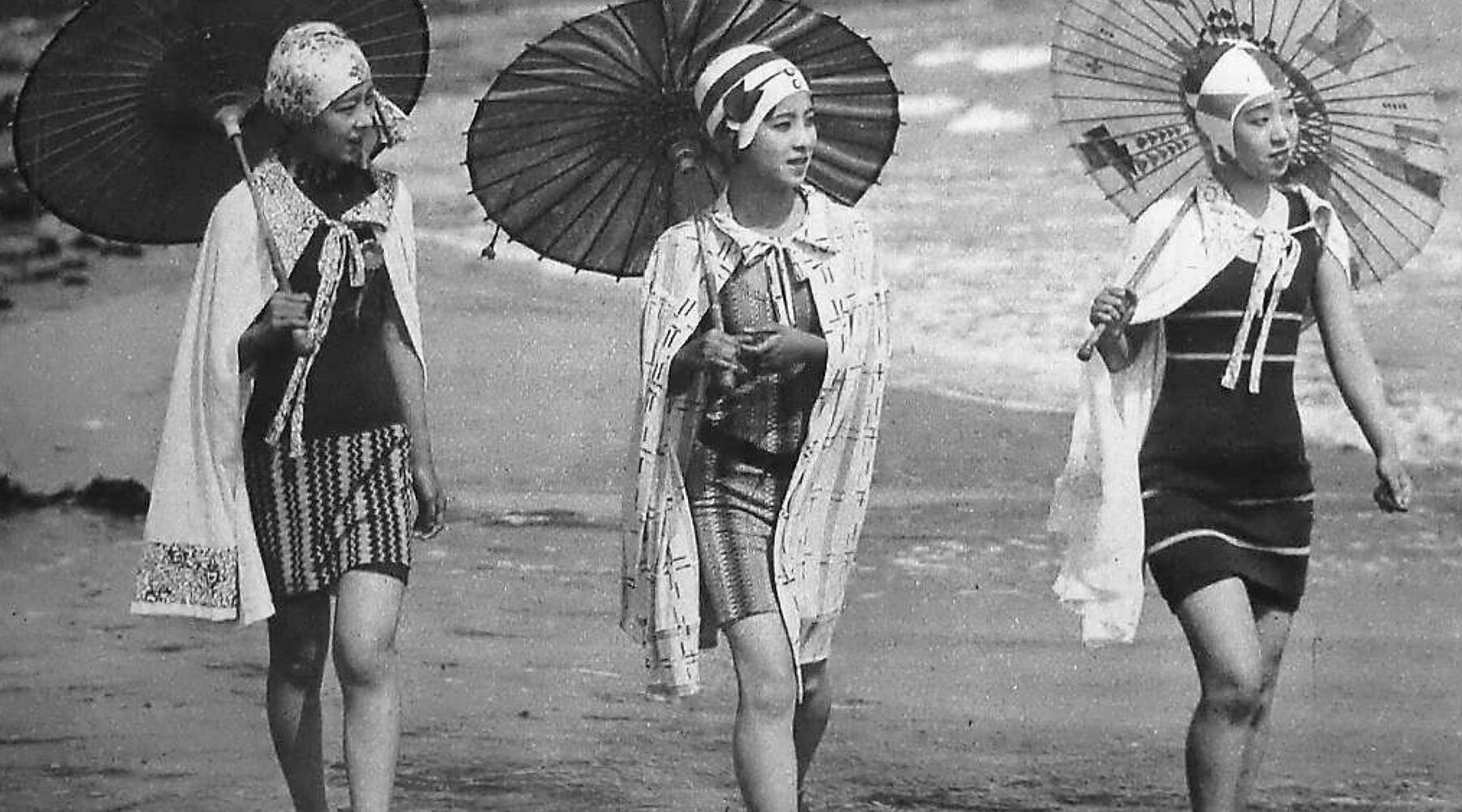![[product_title] - CHANELIA](http://chanelia.com/cdn/shop/articles/The-History-of-Women-s-Swimwear-From-Victorian-Era-8.jpg?v=1728344119&width=1800)
The History of Women's Swimwear: From Victorian Era to Modern Day
Swimwear has come a long way over the years, especially for women. From the modest and restrictive bathing suits of the Victorian era to the daring and revealing bikinis of modern times, women's swimwear has undergone significant changes that reflect the social and cultural norms of their respective eras. This article aims to take you through the journey of women's swimwear, from the Victorian era to modern-day, exploring the trends, styles, and social attitudes that shaped the evolution of this clothing item.
Table of Contents
- Introduction: The Evolution of Women's Swimwear
- Women's Swimwear in the Victorian Era
- The 1920s: The Rise of the Modern Swimsuit
- Women's Swimwear in the 1930s and 1940s
- The Bikini Revolution of the 1950s and 1960s
- The 1970s: The Age of the One-Piece Swimsuit
- The 1980s and 1990s: High Cut and Neon Colors
- The 2000s and Beyond: Retro-Inspired and Body-Positive Swimwear
- The Influence of Sports on Women's Swimwear
- The Impact of Social and Cultural Changes on Women's Swimwear
- The Future of Women's Swimwear
- FAQ
- Conclusion
Introduction: The Evolution of Women's Swimwear
Swimwear, as we know it today, has a long history that goes back to the 18th century when people started visiting seaside resorts for leisure. However, it wasn't until the late 19th century that swimwear became a popular clothing item, particularly for women. The evolution of women's swimwear over the years has been influenced by various factors, including social attitudes, fashion trends, technological advancements, and sporting activities. This article takes you through the journey of women's swimwear, highlighting the significant changes that have taken place over the years.
Women's Swimwear in the Victorian Era
During the Victorian era, women's swimwear was very different from what we see today. The typical swimsuit for women was a full-length dress made of wool or flannel, often accompanied by stockings, shoes, and a hat. The dress covered the entire body, including the arms and legs, and was designed to preserve the modesty of women. It was considered scandalous for women to show any part of their body in public, including their arms and ankles.
The 1920s: The Rise of the Modern Swimsuit
The 1920s saw a significant change in women's swimwear. With the rise of the modern swimsuit, women began to show more skin, and the swimwear became more practical and functional. The one-piece swimsuit, which was initially made of wool, started to be made of more comfortable and lighter materials such as silk and rayon. The swimsuits were also shorter, with hemlines above the knee, allowing women to move more freely in the water.
Women's Swimwear in the 1930s and 1940s
In the 1930s and 1940s, the swimsuit became more streamlined, with a focus on comfort and practicality. The two-piece swimsuit, also known as the "bikini," was introduced in the 1940s, but it was not yet widely accepted. Women's swimwear during this period still covered the midriff and was relatively conservative.
The Bikini Revolution of the 1950s and 1960s
The bikini revolutionized women's swimwear in the 1950s and 1960s, marking a significant shift in social attitudes towards women's bodies. The bikini was initially met with controversy and outrage, but it soon gained popularity, thanks to iconic figures such as Marilyn Monroe and Brigitte Bardot. The bikini featured a top and bottom that revealed more skin, and it came in various designs and patterns. The bikini was a symbol of freedom and liberation for women, who were starting to challenge traditional gender roles and expectations.
The 1970s: The Age of the One-Piece Swimsuit
The 1970s saw a return to the one-piece swimsuit, as women became more concerned with fitness and athleticism. The one-piece swimsuit was designed to provide more support and coverage, and it came in various styles, including the high-cut and the racerback. The one-piece swimsuit was also popular among professional swimmers, who needed a functional and practical swimsuit for their competitions.
The 1980s and 1990s: High Cut and Neon Colors
The 1980s and 1990s were characterized by the high-cut swimsuit, which revealed more of the legs and hips. The swimsuits also featured bold and bright neon colors, which were reflective of the pop culture of the time. The swimsuits were often accessorized with sunglasses, hats, and jewelry, making them more fashionable and stylish.
The 2000s and Beyond: Retro-Inspired and Body-Positive Swimwear
In the 2000s and beyond, women's swimwear became more retro-inspired, with a focus on vintage designs and styles. The swimsuits were also more body-positive, with a variety of sizes and shapes available for women of all body types. The bikini continued to be popular, but one-piece swimsuits also made a comeback, with cutouts, ruffles, and other decorative elements.
The Influence of Sports on Women's Swimwear
The evolution of women's swimwear has been influenced by sporting activities, particularly swimming. Professional swimmers have influenced the design and functionality of swimsuits, with innovations such as the high-tech swimsuit and the compression swimsuit. Women's swimwear has also been influenced by other sports, such as beach volleyball and surfing, which require more support and coverage.
The Impact of Social and Cultural Changes on Women's Swimwear
Social and cultural changes have also had a significant impact on women's swimwear over the years. Women's liberation movements, changing attitudes towards body image, and the rise of social media have all influenced the design and style of women's swimwear. Women are now more empowered to express themselves through their swimwear, and they have more options to choose from than ever before.
The Future of Women's Swimwear
The future of women's swimwear is likely to be influenced by technology, sustainability, and diversity. Swimsuits that are made from recycled materials and that use innovative technologies to enhance performance and comfort will become more popular. Swimsuits that cater to a wider range of body types and sizes will also become more common, reflecting the growing demand for inclusivity and diversity.
FAQs
-
What was the first type of swimsuit worn by women? The first type of swimsuit worn by women was the bathing costume, which consisted of a full-length dress and pants worn over bloomers. It was designed to be modest and cover the entire body.
-
When did the bikini become popular? The bikini was first introduced in 1946, but it did not become popular until the 1960s. It was initially controversial and deemed too revealing, but it eventually became a symbol of women's liberation and empowerment.
-
What is the most popular type of swimsuit? The most popular type of swimsuit varies depending on the current trends and fashion preferences, but the bikini and one-piece swimsuit remain perennial favorites.
-
How has social media influenced women's swimwear? Social media has provided a platform for women to share and showcase their personal style, which has influenced the design and style of women's swimwear. Influencers and celebrities on social media also have a significant impact on the popularity of certain swimsuits.
-
What impact has sustainability had on women's swimwear? Sustainability has led to the development of swimsuits made from recycled materials, reducing the environmental impact of the fashion industry. Sustainable fashion has also influenced the design and style of women's swimwear, with a growing demand for swimsuits that are both eco-friendly and fashionable.
Conclusion
Women's swimwear has come a long way from the modest bathing costumes of the Victorian era to the bold and colorful swimsuits of today. The evolution of women's swimwear has been influenced by social and cultural changes, sports, and technological advancements. Women are now more empowered than ever to express themselves through their swimwear, and they have more options to choose from than ever before. The future of women's swimwear is likely to be shaped by sustainability, technology, and diversity, reflecting the changing attitudes and values of society.
References
- "The Evolution of Women's Swimwear." Farfetch, 2021, www.farfetch.com/style-guide/the-evolution-of-womens-swimwear/.
- "A Brief History of Women's Swimwear." Elle, 2018, www.elle.com/fashion/a22358116/history-of-womens-swimwear/.
- "The History of Swimsuits." ThoughtCo, 2021, www.thoughtco.com/the-history-of-swimsuits-1992438.

















Leave a comment
This site is protected by hCaptcha and the hCaptcha Privacy Policy and Terms of Service apply.